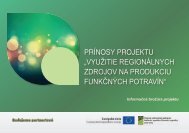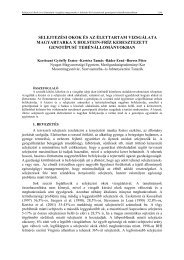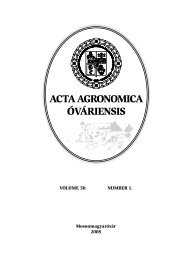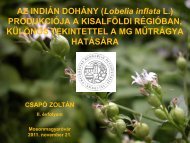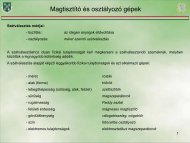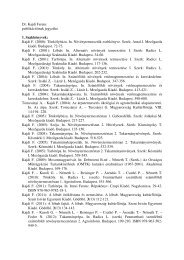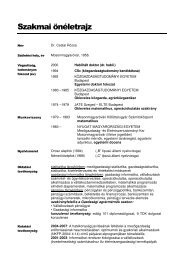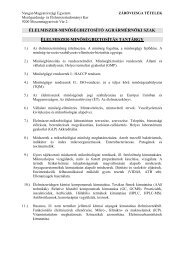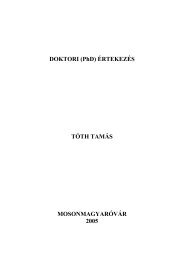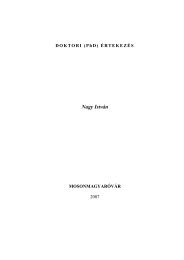teljes anyag - Nyugat-Magyarországi Egyetem Mezőgazdaság
teljes anyag - Nyugat-Magyarországi Egyetem Mezőgazdaság
teljes anyag - Nyugat-Magyarországi Egyetem Mezőgazdaság
Create successful ePaper yourself
Turn your PDF publications into a flip-book with our unique Google optimized e-Paper software.
78Á. Kiss:Theory of quota regulationFertô (1999) classifies milk quotas as one of the quantitative regulators in the agro-eco-nomic regulation system. Its efficiency mechanism can be described by curves of demand(D) and supply (S) as follows (Figure 1. ).Figure 1. The efficiency mechanism of milk quotasS: supply, D: demand, P: price, Q: quantumSource: Fertô (1999)for other sectors of the economy. Profits coming from resource savings are represented bythe area under the curve of S = supplies (described by Q quotas ). The decrease of consumptioncan be described by the area between Q quota under the curve of D = demand. Amongconclusions made by the author upon the analysis of the figure, herewith we need to emphasizethe effect of the quota on the structure of production. Production quotas result ina less flexible production structure, which can follow the changes in market demands lessflexibly, because the quota equally limits the production of both efficient and inefficientproducers, hindering a more effective re-structuring of resources.If the milk quota regulation enables the transfer of quotas:– less effective producers may sell their quotas,– forced termination of production will require lower government support (incomecompensation) and– quota trading will be suitable for the redistribution of quotas based on the relativeefficiency of producers (Fertô1999) theoretically.Actual efficiency of advantages highly depends on the actual way of administrative regulations,e.g. quota withdrawal automatisms do not allow many producers to stop inefficient



